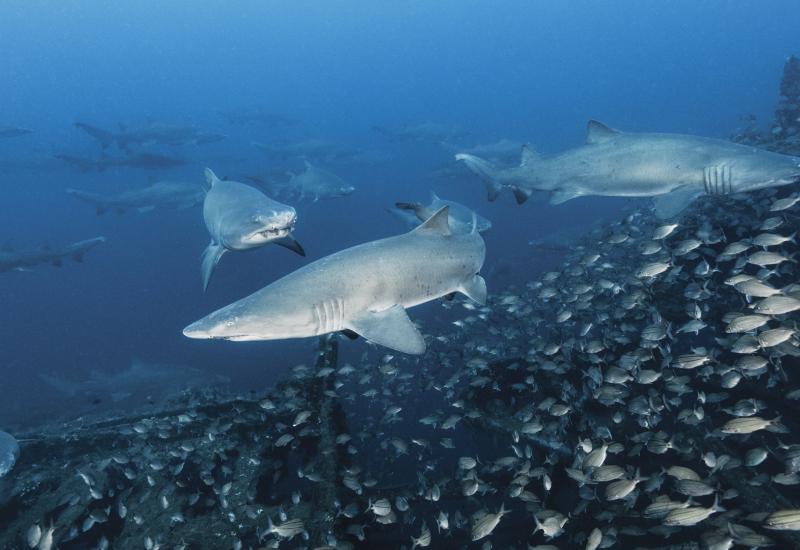Mastering the Art of Cephalopod Photography

Alex Mustard
Newton’s third law says that every force in nature has an equal and opposite reaction. Clearly, he never watched a cuttlefish. I am diving in Raja Ampat, Indonesia, and in front of me, a female broadclub cuttlefish remains completely stationary in the current without making any obvious effort. She’s laying eggs. Every minute or so, she reaches out and delicately places an egg into a tiny crack in the coral. When she moves, it is with intelligence. She’s watchful, and rather like a UFO, she moves with a fluid precision that seems to defy the laws of physics. Despite the discovery of fossils that date back over 500 million years, I can’t help but wonder if she’s a visitor from another planet.
There are few more fascinating creatures to spend time with underwater than cuttlefish, octopuses and squids. They live fast and are very visual animals, making them particularly interesting to watch — and there is no doubt they are watching us too. Science calls them cephalopods, which I pronounce with a hard k, but you can also say it with an s sound. The name translates to “head foot”, a nod to their unusual body structure with limbs that grow out from around the mouth.
Related Reading: Peep Show: Dive with Hundreds of Thousands of Spawning Cuttlefish in South Australia
With no obvious protection for their soft bodies, like armor or spikes, you’d think they’re easy prey. But, rather like us, the cephalopod’s well-developed brain conjures up excellent defenses. Deceit is a prime strategy. It is a master of disguise, able to instantly change the color, texture and shape of its body. It bewitches both predators and prey, and when this doesn’t work, in the case of an attack it can squirt an inky smoke screen to cover its escape. Some species can even increase the amount of mucous mixed with their ink to give the appearance of a solid body hanging in the water. This decoy is known as a pseudomorph. Their ink also contains chemicals that irritate eyes and surely must be unpleasant when it passes over the would-be predator’s gills.
Cephalopod mating is as weird as the rest of their lives. Males pass sperm to females in a sac, which the female holds on to until she lays her eggs. Therefore, males usually guard females until this is done. Diving in England I watched a male cuttlefish flash wide zebra stripes across one side of his body to warn a rival while he showed his mate passive, reassuring patterns on the other half of his body.
Cephalopods are always up to something, and you can make the most of that behavior to create interesting images— by not interfering. The biggest mistake you can make as a photographer is to rush in for a shot as soon as you spot one. Instead, keep your distance. Let them get back to what they were doing, and only then think about pictures.
Related Reading: Ask a Pro Photographer: How Do You Edit Underwater Photos?
Visually, you want their amazing body shape to come through in your photos. Blackwater diving encounters are excellent in this regard because you can naturally frame them against open water. It is more challenging with octopuses that naturally live on the seabed. Although disrespectful photographers have resorted to flicking them up into the water column for pictures, you should never do this. Instead, embrace the challenge of using composition, camera settings and lighting to make their distinctive shape the star, ideally supercharging your shots with natural behaviors.










